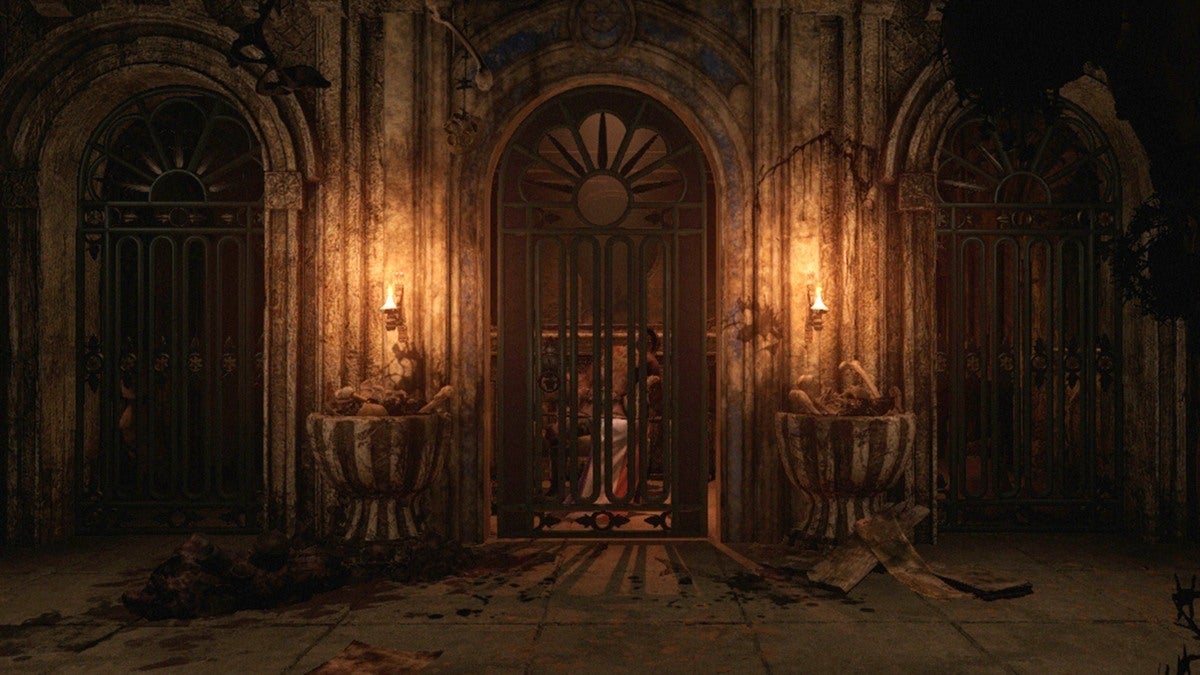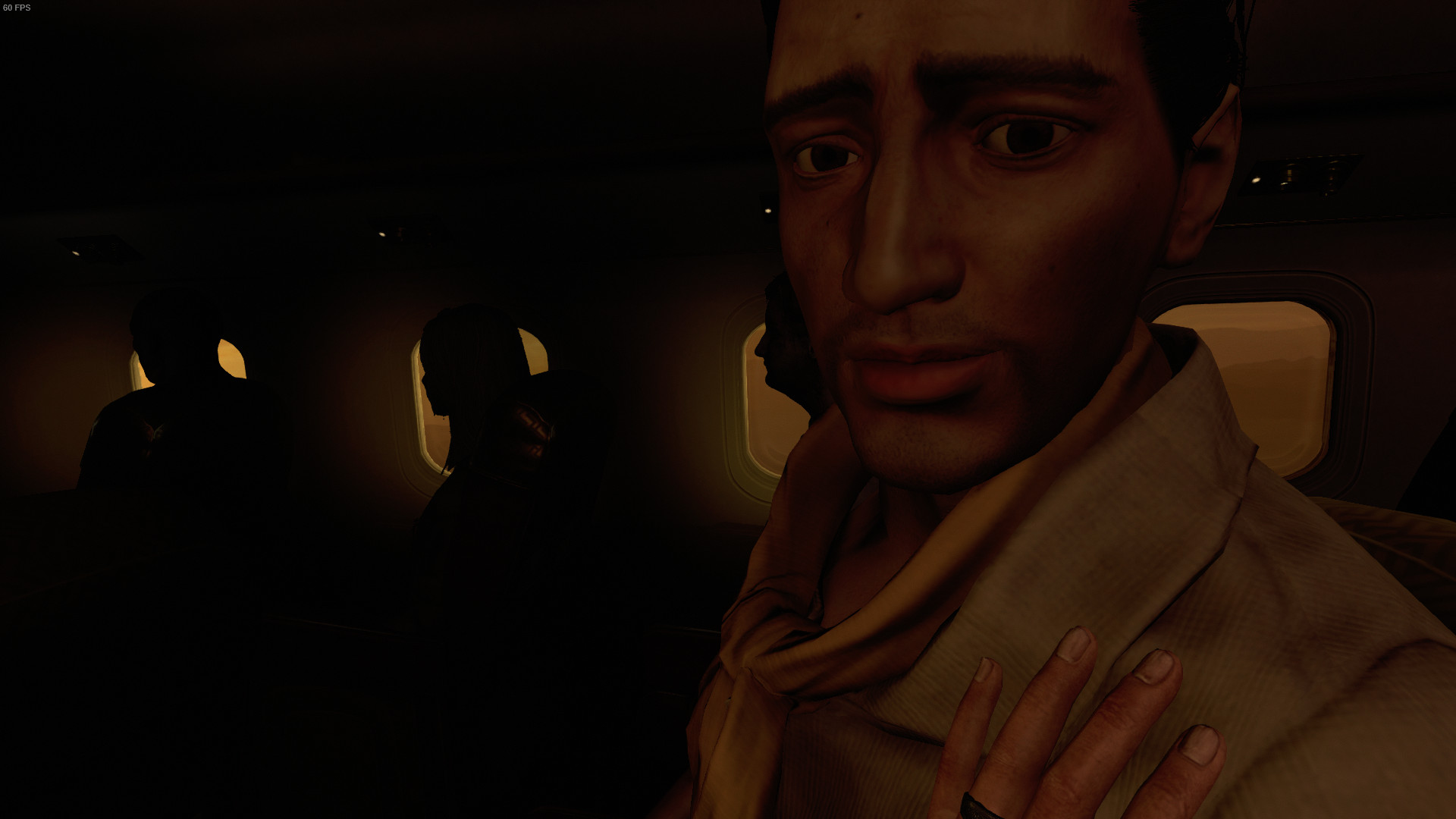Platforms:
PC,
Released:
October 20, 2020
Publisher:
Frictional Games
Developer:
Frictional Games
Ten years ago, Swedish developer Frictional Games struck gold in horror game Amnesia: The Dark Descent. Blowing up largely in part to the streaming community and growing from there, the team had a surprise hit on their hands. Since then, they handed off the IP to developer The Chinese Room in 2013 to create an indirect sequel, with Frictional then moving on to release Soma in 2015. A decade later and the studio has returned to the hit horror world with Amnesia: Rebirth. It’s an eerie delight, and playing it feels like no time is passing at all.
As the name suggests, Rebirth serves as a reintroduction to the world of Amnesia. It’s a continuation in some ways: names, iconography and world events will show up and be nodded to at times. Though it won’t by any stretch of the imagination deter newcomers. In other means, the game also serves as a departure. Some of its aesthetic and setting has changed, a lot of it for the better too.
This time, your horrific adventure will take place in the sandy deserts of North Africa’s Algeria. Players take control of a character by the name of Tasi, a French woman whose expedition is rudely interrupted when her plane crashes in the middle of the desert. Climbing out of the wreckage, she finds herself alone, separated from both her husband Salim and her other expedition mates. Caves are a good refuge from the burning sunlight, but with them comes dully lit tunnels and eerie wall scrawlings that could read as either tribal or alien. Just what is going on? How do you even begin to escape this arid wasteland?
Simply put, that’s about all I want to reveal narratively for Amnesia: Rebirth. More than ever, this feels like a game where going in as blind as possible absolutely reaps benefits. Instead, I’m here to talk to you about some of the interesting character work and stellar atmosphere the game sets. Let’s jump in.

Crafting a new horror classic
Straight off the bat, it’s clear you’re in for quite a different ride in Rebirth. Waking up out of the crash, tripping and stumbling your way through its seemingly endless desert plains, this is vastly different from the Gothic and later Lovecraftian vibes that the original, Dark Descent, offered. It’s welcome too: ask me point-blank to name a horror game set in a desert biome and I’d come up empty. This is an entirely unique and intriguing setting, even considering the fact the game is being purposed as a sequel.
Where it differs from its predecessors, a revitalised familiarity also shines through in its scares and mechanics. The various caves and tight spaces are as devoid of light as ever. Instead of tinderboxes, Rebirth now offers matches. Its end result is similar: you can light a candle that is strategically spaced out from another. Without feeling like too much of a free giveaway to players, these matches can light up about three (maybe four if you’re quick smart) light sources before it runs out. This is vastly more satisfying relief to the one use a tinderbox had. Worst comes to worst, you can just strike a match and hold onto it for dear life, lighting your way as you make that last sprint to a natural light source. Yes, the creeping dread of the ever-nearing darkness is back, baby.
Other key mechanics return here too. Readables are important as ever, detailing lore and answering some questions from the first game I didn’t even expect to find. There’s a lantern again, but oil for it dies so quick you’ll scarcely use it except for moments of desperation. Revisiting and exploring memories and echoes of what happened prior in the locations you visit this time come to you through sketches that’ll appear in your issued notebook. These are accompanied by some frankly great voice acting and feel like a natural progression from how backstory was told to you prior. I mean, you’ll go ever many memories where Salim is talking to you, calling you his ‘heart,’ as vivid gorgeous doodles of him appear. Doesn’t that just make your heart swell?
“Where it differs from its predecessors, a revitalised familiarity also shines through in its scares and mechanics.”
At the forefront of all the returning functions of examining items, reading lore and the likes is an entirely new one purposed for exploration. It’s situated entirely on Tasi’s wrist: her bracelet amulet. In one of the first caves you explore in the game, our hero’s bracelet seemingly is fractured. That is, until it starts glowing and she opens it up, revealing an alien-esque compass, covered in indecipherable runes.
This item, when it’s active in certain areas, can be used to get your bearings, navigating around the darkness. What’s more curious though is that it can be used upon nearing rubbles of un-earthly metals, clearing it up entirely and revealing a new path. Quite a left turn, sure, but it works and clicks with the game’s world the more you play. My only wish is it playing a role in some of the puzzles that are on offer in the game. Puzzles were some of the slower weak points of the game, and I wish the environment manipulation the bracelet offers you was utilised here. I can’t help but feel it would’ve felt complementary to one another.
Being mindful of your sanity is once more vital in Rebirth. Unlike the previous painful (and frankly ugly) HUD menu used to check both your heart and brain for physical and mental health, this time it’s a bit harder to keep track of. There are some tell-tale cues though: black, squiggly tentacle-like lines will appear in your vision to indicate your distress. With me finding only maybe two vials of Laudanum – the liquid cure for high sanity – in my entire runtime, I was forced to go with the flow. I love this. The famous warning of ‘Amnesia is not meant to be played to win,‘ that plays at the beginning of each instalment is more true than ever here. I’m not left to many devices in Rebirth. I’ve just got to deal with it, and move on.
Amnesia: Rebirth paints a new horror scape
There’s rarely the time for respite in Amnesia: Rebirth. Whether it’s the wickedly cool but scary monster design, or the haunting blue hue your vision will receive as you get a bit more accustom to darkness, there’s something waiting for you at every turn. I was brought back to all those fears and screams I had playing the game ten years ago.
All of this is largely in part due to the stunning art direction the game has taken. Without giving away too much, some points will have you traverse rundown villages only to end up under an eternal un-natural night sky. Roots that have glowing alien fruits off them may break through cracks in cave walls. Without giving too much away, the game both narratively and aesthetically gets very weird. If you’re at all familiar with Amnesia: The Dark Descent you likely knew this was going to be the case. You also likely know that these complete left turns in vibe and setting is a series staple. Where entries prior took Lovecraftian turns, this one becomes more Giger. Really, if you’re a horror fan it’s something you have to see for yourself. Some environments are particularly stunning for what is still essentially an indie studio.

You’ll really be taken on a true horror journey with this game. More time than ever is spent interacting with and learning about other characters. It’s never too much or distracting either. Tisa and Salim’s story and relationship is worth sticking around for, being equal parts heart-warming and heart-breaking. It still achieved this, while having some laughable (but easily patchable) bugs where dialogue would skip like a record.
Amnesia: Rebirth is a horror game that actually made me care about its characters and their outcomes. That’s a fact and realisation in itself that I can’t take lightly. I can’t think of a game in the genre that’s done that since maybe Resident Evil, which has the advantage of multiple entries and returning faces on its side.
With the dust settled
There’s a line that plays in the opening cutscene of the game that reads something to the likes of “There is a moment when you realise what the pain has made of you.” It’s a line I still think about, days after completing the game. Tasi is literally dragged to the end of multiple Earths, on the longest and most trying journey just to survive. She’s forced to do and then reconcile with some horrible things in the span of the game. Near the end, she catches her reflection and doesn’t recognise herself, only the pain that is now showing through physical effects on her body.
It’s a wonderful little tie together as to what could initially be looked at as just waxing poetic. I’ve watched yet another character in the Amnesia franchise lose absolutely everything they’ve been fighting for, only to see their heartbreak. What a moving and wonderful job Fractional games has done in creating those types of stories over the years.
8
Great
Positive:
- Stunning art direction
- Scarier than ever
- Likeable, relatable characters
- Solid, twisted story
Negative:
- Laughable audio bugs
- Puzzles are tedious and slows the pace
Amnesia: Rebirth is really special. It feels like the fruition of what Fractional Games have aimed for over the last decade. Building upon Dark Descent and even borrowing some of Soma’s great sci-fi horror vibes, this feels like an amalgamation of all that hard work. Hard work that, looking at it now, was entirely worth it. It’s my favourite horror title so far this year, and I’m confident it’ll still be up there when some of the other anticipated genre juggernauts hit.
I know 2020 is big in the world of gaming, with plenty to both keep you busy and distracted. Still, Amnesia: Rebirth is one that is well worth prioritising in your ever-growing list. Take the plunge and descend into darkness… if you dare.





